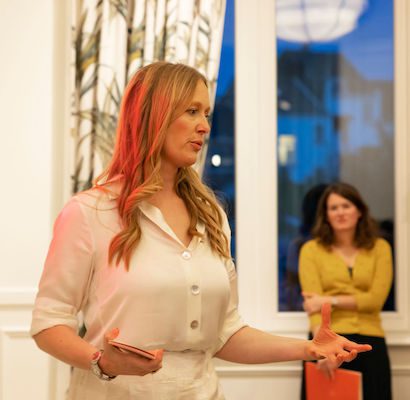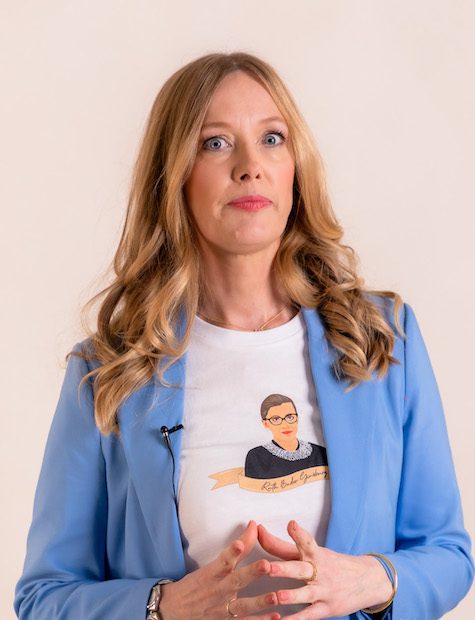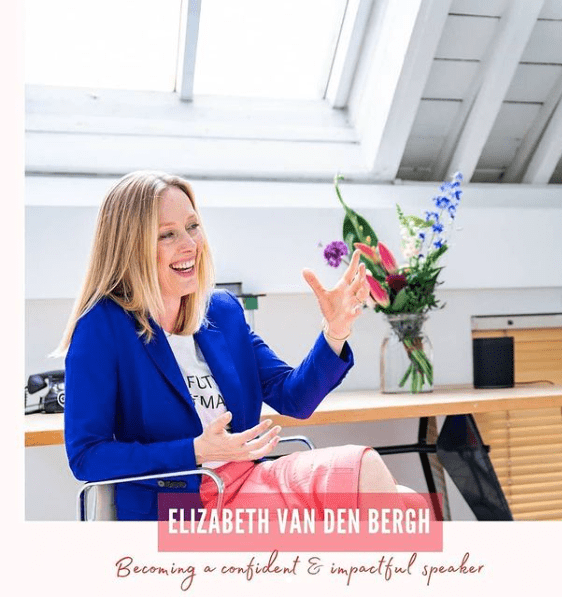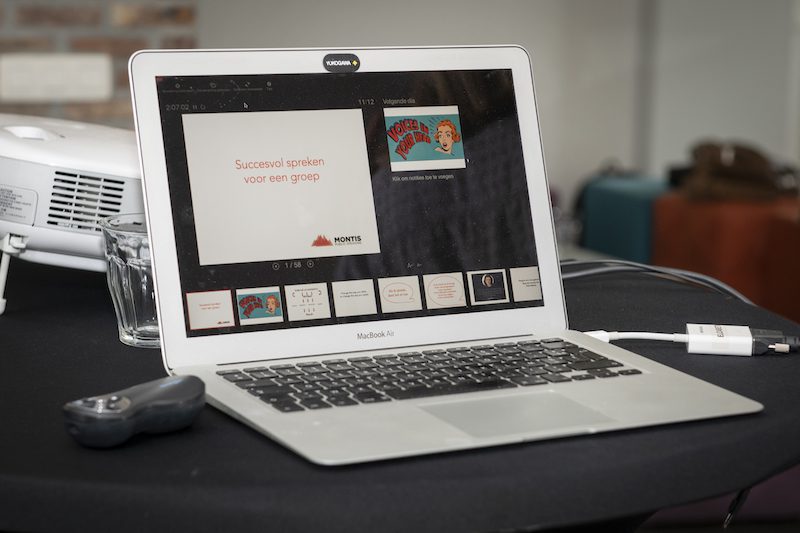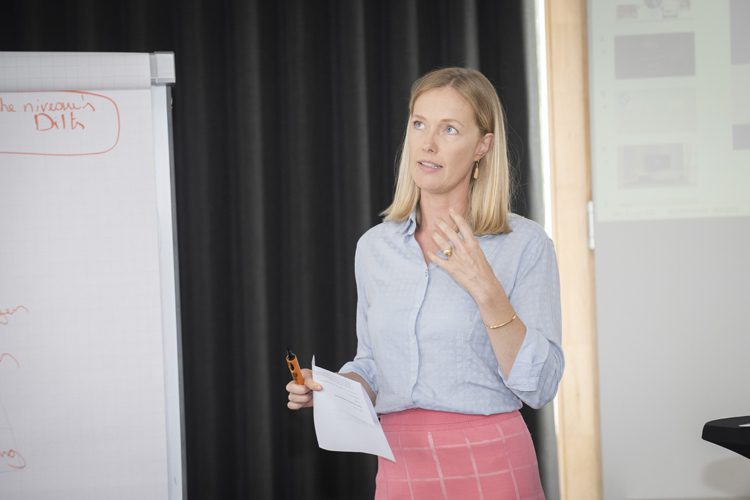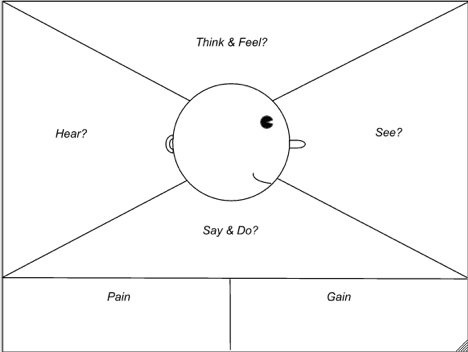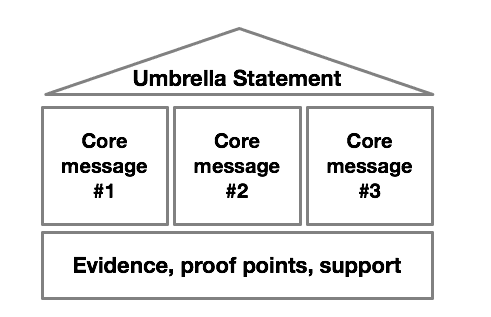I recently attended an event with a keynote speech.
And the speaker is a celebrated entrepreneur, great!
There were some great one-liners, even greater!
Furthermore… many missed opportunities in the delivery of the keynote. So many people in the room, so many opportunities to blow people away.
And she could have easily done that with a strong intro, because that was missing.
Your opening words make or break your speech.
Your opening sets the tone.
And a strong opening makes heads turn and hearts skip a beat.
A strong opening is a fantastic win-win, because it gives you as a speaker tons of self-confidence to stand in full powerful presence when you head off in your story and immediately draw your audience along with you. And make no mistake, that’s what they want !
Of course I will tell you how to start strong:
Start, for example, with a strong statement. A little controversy can work well.
For example: “The question is not if you need speaker coaching, the question is when!”
Or open with a quote. I like to start with:
“There are only two kinds of speakers, those who lie and those who are nervous.”
OR
“You don’t have to be a good speaker to give a good speech.”
Dare to challenge the worldview of your audience. Start with a question that questions everything the audience thought they knew about a topic.
“Did you know…..?” questions.
OR
“Have you ever wondered whether A (what everyone thinks) or B (your controversial view)…… is more true?”
Dare to be surprising. Go straight to the heart of your audience, straight to their beliefs.
A strong start is half the battle of winning them over and this is certainly true when you are in front of a group!
Stick-your-hand up questions for ultimate engagement
I saw hesitantly and therefore without much effect a kind of ‘raise your hand if….’-question.
“If I asked Raise your hand if you agree that women do less business because they care more for the children you would do it.” Not much effect was generated.
You know these questions, and you often see others doing it. But would you do it yourself?
Please do because a raise your hand question is also a mega win-win. I explain. I love doing it.
I also call this audience qualification and collecting intelligence. So valuable for making your speech extra relevant and meaningful.
For the sake of convenience, I call it the hand question.
Suppose you are speaking to a group of entrepreneurs, mainly women, but also employed women.
Then you can ask questions like:
- Who is an entrepreneur?
- Who has been an entrepreneur for more than 10 years?
- Who has been an entrepreneur for more than 5 years?
- Who is really in the CEO chair?
- Who has investors?
The hand question has two super valuable side effects.
As a speaker, you get a better idea of what kind of people you are dealing with. This increases your confidence. For example, you find out if there are any journalists in the room. Sometimes you want to know this. Or doctors. Or budding entrepreneurs. Why is this so important? The answers help you to bring your subject into their world.
And, you probably never thought of it before, such questions create a sense of comfort and security in the audience. If you are in an audience where you hardly know anyone, it is nice to know who is in the room and what those people are thinking. Is that important for you as a speaker? Hell yeah, the atmosphere in the room is important for the success of your speech.
The responses (in this case the number of hands that go up) give you the chance to react and to start a conversation. It increases the relevance of what you have to say.
Hand questions can also be used as a prelude to a sensitive topic.
- Who is happy with the turnover of their company?
- Who wants to earn more?
- Who wants to double next year?
(From safe questions)
- Who makes more than 100k?
- Who makes more than 200k?
- Who will turn over 500k?
(To daring questions)
If your first question to a cold audience is ‘Who converts 500k?’ You won’t get much response, by taking that lead you will get response or your bold question.
I recommend you experiment with this. It’s fun and super valuable.
A good anecdote can go viral
Plenty of anecdotes that had a lot of potential didn’t come to life.
Too bad, such a pity.
A good anecdote is short, relevant and has a clear clue.
With just enough words, well-placed pauses and lively intonation, you want to sketch a situation that arouses curiosity. And then to satisfy that curiosity. This way, the anecdote will stick better.
Example: the story of Zelda La Grange who met Nelson Mandela for the first time.
The magic of that meeting can only be contained if enough, but certainly not too many, leading elements are provided first.
“I was raised with the idea that Nelson Mandela was a terrorist, a dangerous man. Who came from a totally different world, a world that was literally invisible to me. Because of apartheid, we lived in separate worlds…. And white people simply had no idea about the lives of black people.
At work, when I unexpectedly saw an elegant, confident, cordial man in front of me, reaching out and looking right through me, I had no idea what was happening. In his eyes I saw kindness and humanity. My world stood still for a moment. None of what I had assumed to be true all my life was true anymore.”
That’s how you create edge-of-your-seat moments.
I’m talking about the cliffhangers, you know, the reason why you always skip to that next Netflix episode. So now you want to know what happens next after Zelda meets Nelson Mandela.
A strong final chord lingers on for a long time
No climax at the end. Rather, a feeling of “oh, is it done? Damn, what a missed opportunity.
You want to be clear from the start about the effect you want to achieve.
And you can be very explicit about that. Or just secretive. I advise you what is best for your talk when the time comes.
The best strategy for ending with a BANG is to plan your close before you plan the rest of your speech.
You then go back and design your opening so that it sets the stage for your conclusion.
An effect can be:
That your audience thinks ‘what she can do, I can do too!’
That your audience feels “Hell yeah, let’s do this!!!
I often give direction with: ‘If there is one thing I want you to get out of this talk, it’s …..’
This cue ensures that my audience is going to filter out all the info that reinforces my point and let it swell in their heads like a crescendo.
Your ending should always refer back to your intro. That’s how you complete the circle. Our brain loves this!
Your ending should elicit applause!!! Don’t settle for less.
A real pity, then, that keynote of missed opportunities.
For you I want your speech to be different: compelling, fiery, memorable. And that’s not even that hard.

